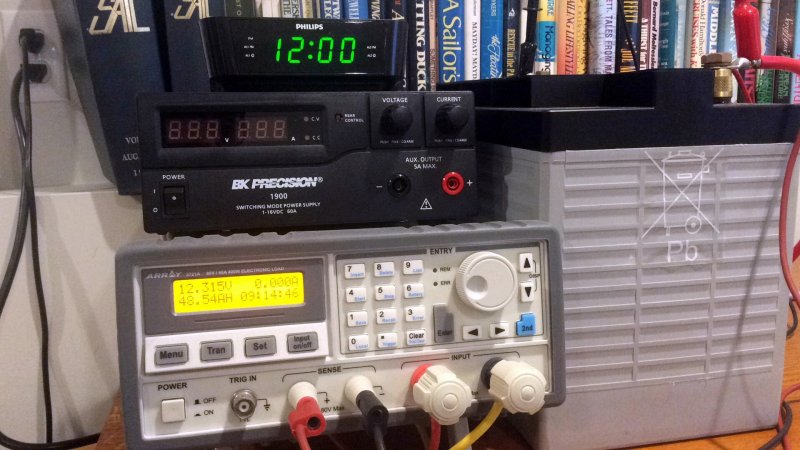It's a 28' hunter. Its a day cruiser. It has 2 batteries. It will be on shore power 5 days a week and in between runs on the bay. The onboard electronics draws less the the onboard electronics and trolling motor of my bass boat. There is a 40 minute one way trip from the marina to the bay. The batteries should fully charge every time I return to the marina. Key word is should.Crusty,
Is this your first boat? Are you day sailing? Will you be plugging into shore power on a regular basis?
If yes, nothing wrong with getting a more basic, lower cost battery charger and putting the dollars saved into other projects. The difference may be your batteries last 3-4 years instead of 5-7 years or longer. If your batteries are standard flooded lead acid and not expensive AGMs or other premium battery types, the payback of a higher quality charger may not be realized in your sailing scenario.
The only thing that could and should operate while in the slip is the bilge pump.
I am not a gambling men, but if I was I bet I could pull this off with a solar trickle charge.
Heck the last owner just carried a portable jump starter down every Saturday in case the batteries were low to start the yanmar. I am guessing he has done that for years.
That all said I just want to drop in a plug and play replacement for what was there for now. 20 amps serving 2 batteries. If it comes with a plug drop in and outlet. No plug direct wire it easy peazy.
Big picture. In my mind I would like to do a complete solar conversion. What is stopping me from the solar conversion? By my calculations, I am not sure if I have the necessary surface area to mount the solar panels that are required. I just need to spend some with a tape measure, note pad and a calculator and crunch the numbers.
As far as my first boat, no that was the USS Gato SSN-615 some 40+ years back. Then there was a destroyer, a sub tender and 2 aircraft carriers and many recreational boat including a bass boat and a jon boat currently in the driveway. I have work on everything mechanical outside the main machinery spaces including small boats. All that said, this is my first sailboat and I must say they are unique.


